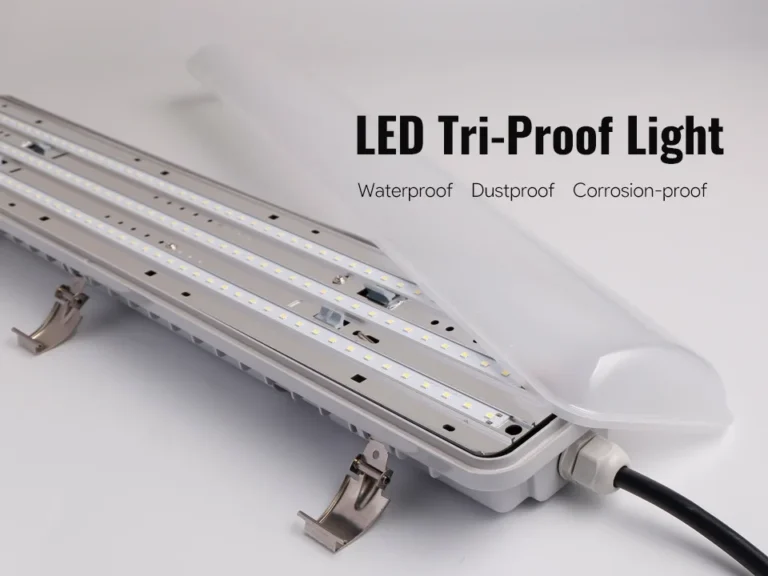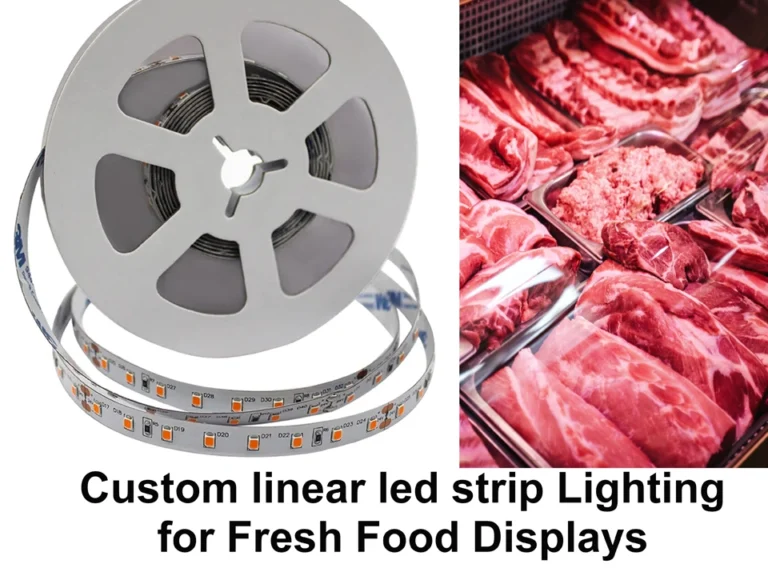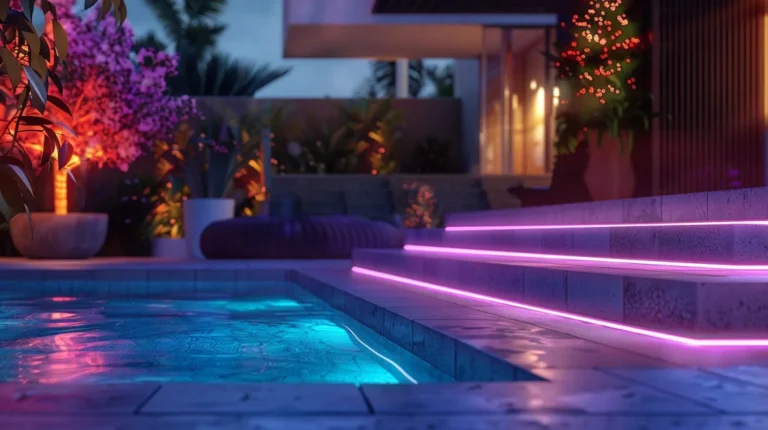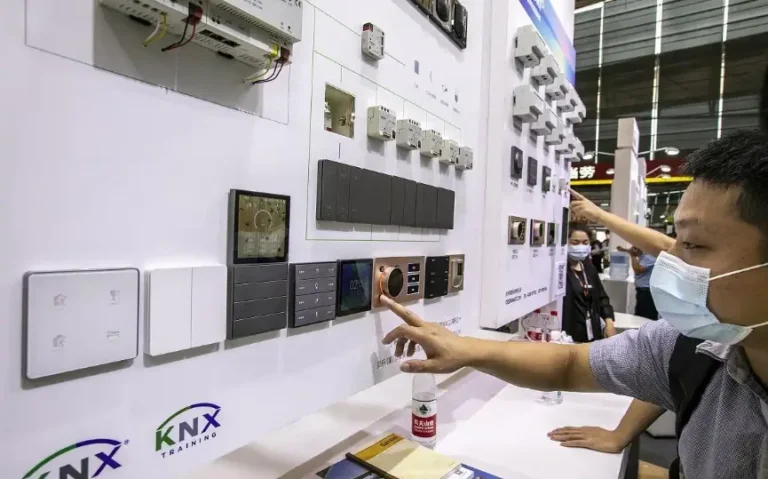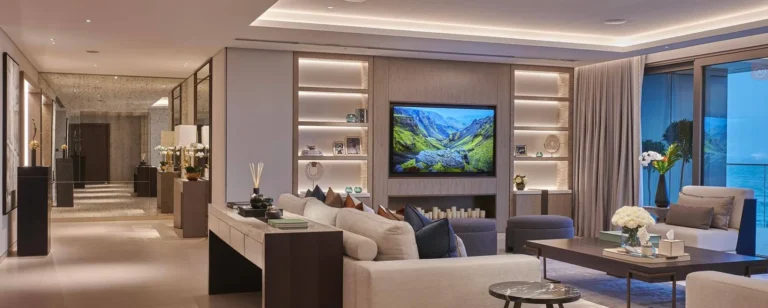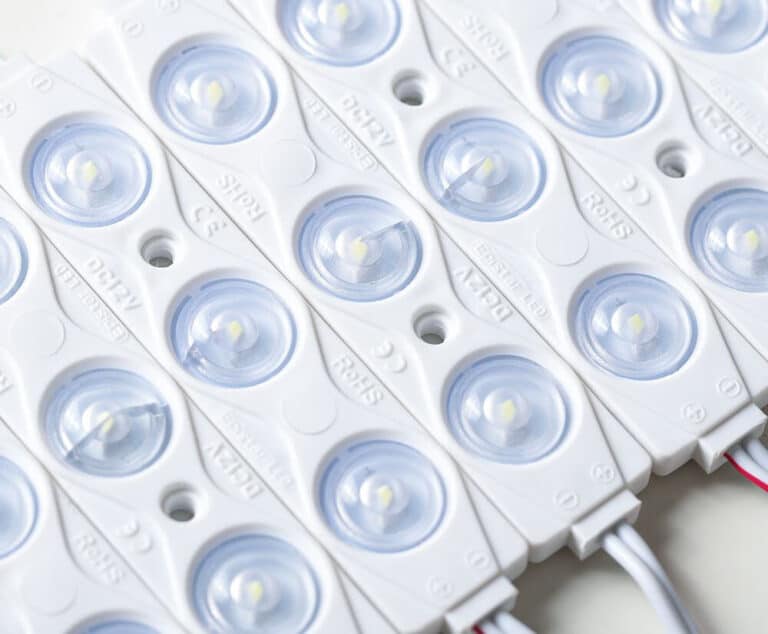Las luces LED triproof, diseñadas para ser impermeables, a prueba de polvo y resistentes a la corrosión, se han convertido en esenciales para entornos como fábricas, almacenes, estacionamientos, túneles e instalaciones de procesamiento de alimentos. Su robusta construcción garantiza un rendimiento de iluminación estable incluso en condiciones duras. Sin embargo, seleccionar el tipo incorrecto de luz LED de tres a prueba puede resultar en un mantenimiento costoso, un brillo inadecuado, una vida útil reducida o un consumo de energía innecesario. Para lograr un rendimiento óptimo y una fiabilidad a largo plazo, es importante elegir un accesorio que coincida con los requisitos específicos de cada instalación. Esta guía explicará cómo seleccionar la luz LED de prueba de tres y la luz adecuada según la clasificación IP, la potencia y el tipo, lo que le ayuda a hacer la opción de iluminación más eficiente y duradera para cualquier espacio industrial o comercial.
entender lo que es un Luz LED tria prueba IS y sus funciones principales
El término "Tri-Proof" se refiere a tres características de protección esenciales: impermeable, a prueba de polvo y resistente a la corrosión. Una luz LED de tres a prueba está diseñada específicamente para resistir la humedad, las partículas de polvo y los vapores químicos que pueden dañar los accesorios de iluminación convencionales. Su diseño sellado con carcasa duradera y juntas de silicona evita la entrada de agua y la acumulación de polvo, lo que lo hace ideal para entornos exigentes como fábricas, túneles o áreas de estacionamiento.
Más allá de la protección, la función central de una luz LED Tri-proof es proporcionar una iluminación consistente y eficiente en energía en áreas expuestas a humedad, suciedad o corrosión. Con una alta eficiencia luminosa y una larga vida útil, garantiza un rendimiento fiable y una frecuencia de mantenimiento reducida, ayudando a mantener la productividad y la seguridad en espacios industriales y comerciales.
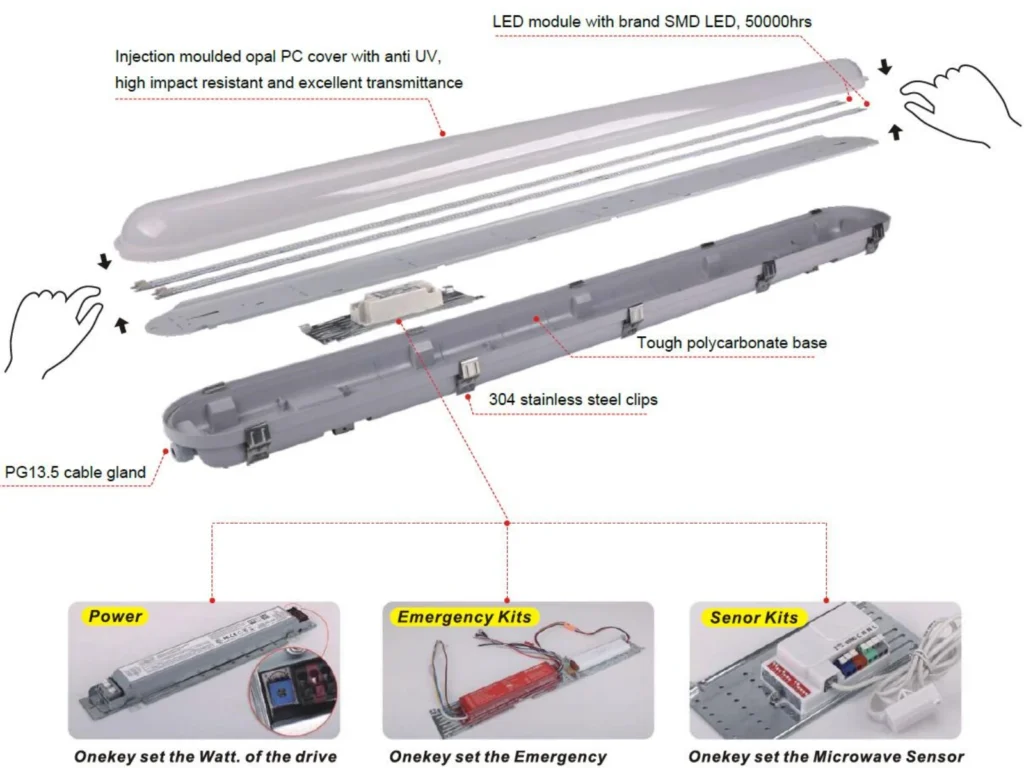
Clasificación IP: ¿Qué tan impermeable y a prueba de polvo necesitas realmente?
¿Qué es la clasificación de IP?
La clasificación IP (Protección de Ingreso) mide qué tan bien una lámpara resiste el polvo y la intrusión de agua. Consta de dos dígitos: el primero indica protección contra sólidos (como polvo) y el segundo muestra protección contra líquidos. Las clasificaciones de luz LED triproof incluyen IP65, que resiste chorros de agua y polvo de baja presión; IP66, que ofrece una mayor protección contra el agua; y IP69K, el nivel más alto, diseñado para soportar la limpieza de agua a alta temperatura y a alta presión en entornos como las plantas de procesamiento de alimentos.
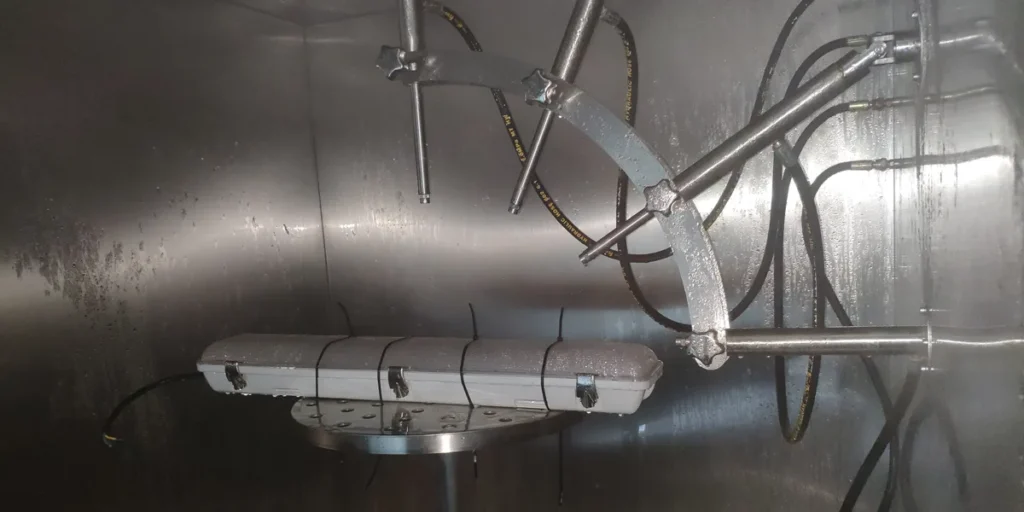
Desafíos de compra comunes
Uno de los mayores desafíos al seleccionar una luz LED de tres pruebas es determinar qué clasificación IP se necesita realmente. Una calificación demasiado baja puede provocar fallas en el producto, corrosión o mantenimiento frecuente, mientras que elegir un nivel de IP innecesariamente alto puede aumentar los costos de compra sin agregar valor real. El nivel de protección de equilibrar con el entorno del proyecto es clave para una iluminación rentable.
Clasificaciones IP recomendadas para diferentes aplicaciones
En general, las áreas secas en interiores solo pueden necesitar protección IP65, mientras que los ambientes húmedos o exteriores requieren clasificaciones más altas. La siguiente tabla resume las aplicaciones típicas y los niveles de IP adecuados:
| Aplicación | Clasificación IP recomendada |
| Almacén / Aparcamiento | IP65 |
| Área de túnel / lavado de autos | IP66 |
| Instalación de procesamiento de alimentos | IP69K |
| Sitio industrial al aire libre | IP66-IP69K |
Potencia y eficiencia luminosa: equilibrio entre potencia y rendimiento
Vataje: Elegir la salida de potencia correcta
Muchos usuarios no están seguros de cómo seleccionar la potencia adecuada para sus luces LED de tres a prueba. El nivel de potencia correcto depende de varios factores, incluyendo la altura de instalación, el área de cobertura y el brillo requerido. Por ejemplo, un accesorio de 40 W puede ser suficiente para un pasillo o área de estacionamiento, mientras que un almacén con techos más altos puede necesitar 60 W o más para lograr una iluminación uniforme. El software de diseño de iluminación como Dialux puede ayudar a simular las condiciones reales del proyecto, asegurando que cada área reciba el brillo óptimo sin desperdicio de energía ni puntos oscuros.
eficiencia — mismo poder pero mucho más brillante
Es común notar que dos luces LED a prueba de tres con la misma potencia pueden tener niveles de brillo muy diferentes. La clave radica en la eficiencia luminosa, medida en lúmenes por vatio (Lm/W). Un accesorio con mayor eficacia luminosa convierte más potencia en luz en lugar de calor, ofreciendo mayor brillo y ahorro de energía. Elegir luces LED de alta eficiencia con tres a prueba de luz no solo reduce las facturas de electricidad, sino que también minimiza el mantenimiento y mejora el rendimiento a largo plazo en entornos industriales y comerciales.
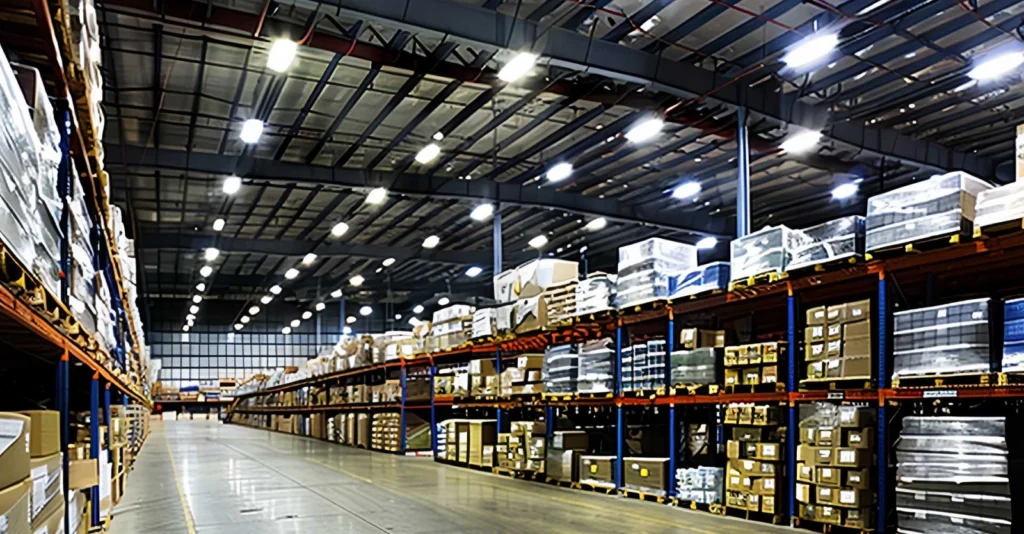
Tipo: integrado, dividido o con forma
El mercado ofrece varios tipos de luces LED tri-proof, cada una diseñada para cumplir con diferentes requisitos ambientales y presupuestarios. Si bien sus funciones centrales (resistente al agua, a la resistencia al polvo y a la corrosión) son generalmente similares, elegir el tipo correcto puede marcar una gran diferencia en la comodidad de instalación, la durabilidad y los costos de mantenimiento.
Luz LED integrada de tres a prueba
Una luz integrada de tres a prueba cuenta con una estructura totalmente sellada donde se combinan los chips LED, el conductor y la carcasa en una sola unidad. Este diseño proporciona una protección superior contra la humedad y el polvo, asegurando un rendimiento fiable en condiciones duras. Los modelos integrados son ideales para entornos como estaciones de lavado de autos, cámaras de almacenamiento o túneles, donde la exposición constante a la humedad y los cambios de temperatura requiere la máxima durabilidad.
Luz dividida con LED tria prueba
Una luz de prueba triagrada de tipo dividido separa la carcasa y la fuente de luz interna, que puede ser un tubo LED reemplazable o un módulo lineal. Esta estructura permite un mantenimiento más fácil y menores costos de reemplazo cuando falla un componente. Aunque su nivel de impermeabilidad es ligeramente inferior al de tipo integrado, ofrece una solución más rentable para aplicaciones como talleres, almacenes o áreas de estacionamiento, donde las condiciones son menos extremas pero la fiabilidad sigue siendo esencial.
Luz LED triproolución con forma o redonda
Para proyectos que requieren una apariencia distintiva o una distribución de luz específica, a menudo se utilizan luces de tres a prueba, como luces LED redondas de prueba triple. Su diseño único se adapta a granjas ganaderas, plantas alimenticias o áreas industriales decorativas, donde tanto la estética como el rendimiento son importantes. Estas luces combinan protección con un aspecto elegante, ampliando la gama de aplicaciones de tres a prueba más allá de los diseños lineales estándar.
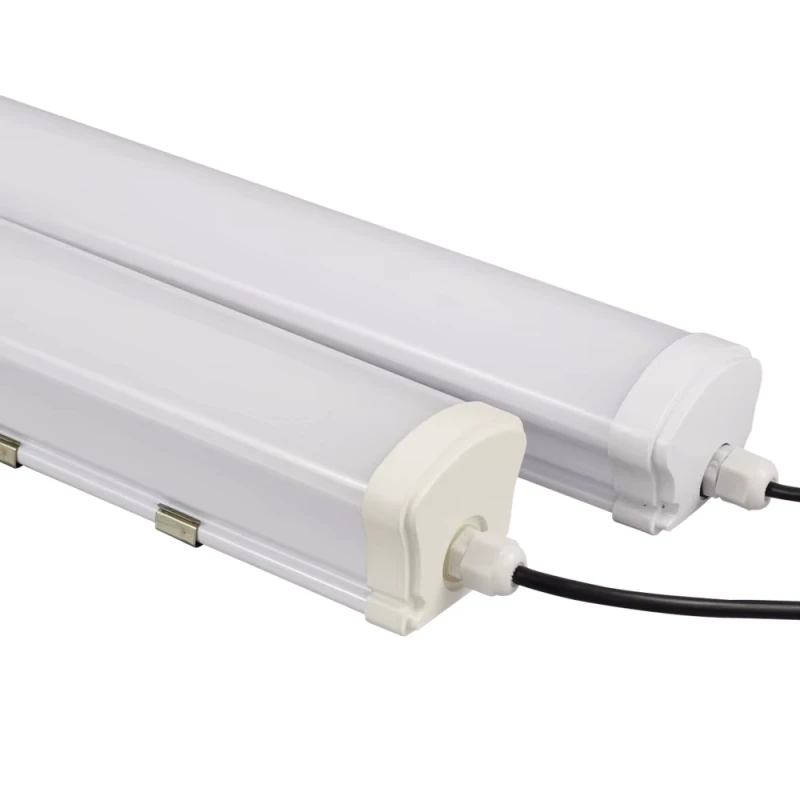
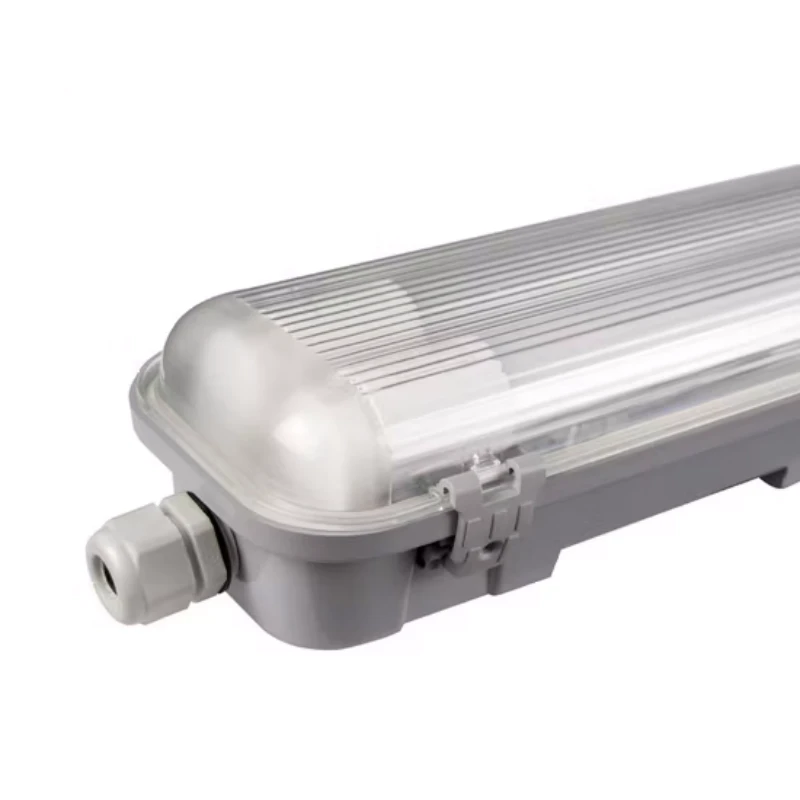
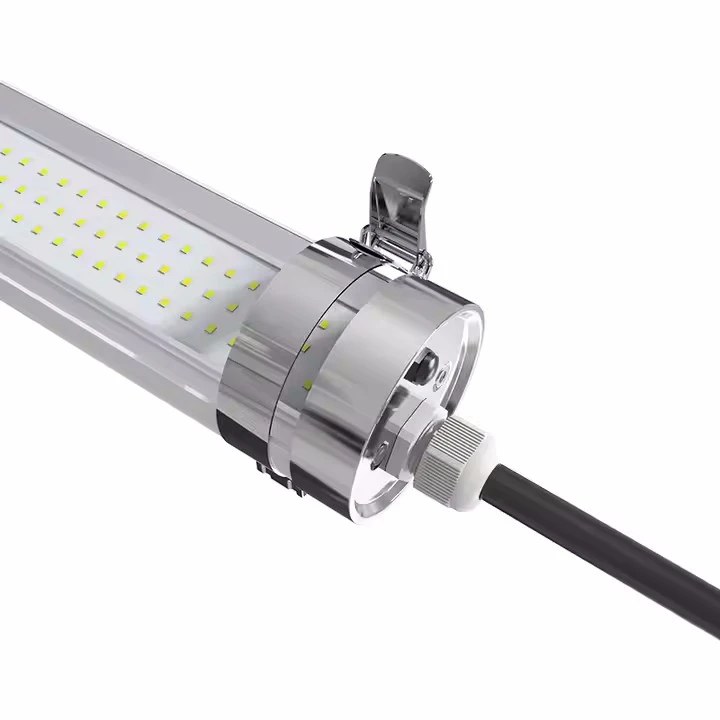
Otros factores clave: material, temperatura de color, método de instalación y flexibilidad
Material: La carcasa de aluminio ofrece una mejor disipación del calor y una mayor vida útil, mientras que los materiales de PC o ABS brindan un peso más ligero y un costo más bajo.
Temperatura de color: El blanco neutro 4000K es adecuado para áreas de trabajo, mientras que 5000–6500K proporciona un mayor brillo para espacios industriales o exteriores.
Método de instalación: Las luces LED tri-proof se pueden montar en la superficie, suspender o enlazarse, dependiendo de la altura y el diseño del techo.
Flexibilidad de instalación: Los diseños modulares y los conectores rápidos simplifican el cableado (cadena de margaritas), lo que facilita la instalación o el reemplazo de luces en proyectos a gran escala.
Conclusión
Elegir la luz LED triproof correcta requiere una cuidadosa consideración de la clasificación IP, la potencia, el tamaño y el tipo para garantizar la durabilidad, la eficiencia energética y el rendimiento de iluminación óptimo. La luminaria adecuada no solo reduce los costos de mantenimiento y energía, sino que también garantiza la fiabilidad a largo plazo en entornos industriales o comerciales exigentes.
SignliteLED Se centra en la fabricación de luces LED de alta calidad con luz triproof diseñadas para condiciones difíciles. Ofrecemos soluciones de iluminación personalizadas basadas en los requisitos de su proyecto, incluyendo informes de simulación de Dialux, espectros ópticos personalizados y asesoramiento de instalación profesional. Ya sea para fábricas, almacenes o instalaciones de almacenamiento en frío, SignLiteled ofrece una iluminación dura y eficiente de prueba que cumple con los estándares internacionales. Contáctenos hoy para discutir las necesidades de su proyecto.
